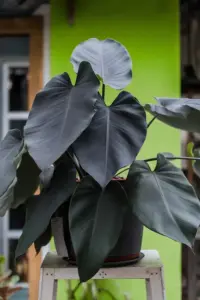Biological Features of Philodendron White Knight
The Philodendron White Knight is a captivating plant, recognized for its unique characteristics. Primarily, it features striking leaves that showcase a blend of green and white hues. This combination creates a dramatic contrast, making it an attractive addition to any garden or indoor space. Moreover, the leaves can exhibit variations in color, especially when exposed to different light conditions.
Growth Habit
Philodendron White Knight grows as a climbing vine. It may reach lengths of several feet if provided with proper support, such as a moss pole. Its growth habit not only adds verticality to your plant collection but also invites interesting arrangements. With adequate care, this plant can thrive and reward its owner with lush foliage.
Light and Water Requirements
This plant prefers bright, indirect light. Too much direct sunlight can scorch the leaves. For watering, it is essential to let the soil dry partially between waterings. Overwatering can lead to root rot, which is detrimental to its health.
Soil and Fertilization
Philodendron White Knight thrives in well-draining, nutrient-rich soil. A mixture of potting soil, peat, and perlite is ideal. Regular fertilization during the growing season enhances its growth. Use a balanced liquid fertilizer every 4-6 weeks to promote vibrant foliage.
Common Varieties
| Variety | Characteristics |
|---|---|
| Philodendron White Knight | Distinctive white variegation on green leaves |
| Philodendron Brasil | Heart-shaped leaves with golden-yellow patterns |
| Philodendron Pink Princess | Stunning pink hues on dark green leaves |
By understanding the biological features of Philodendron White Knight, plant enthusiasts can effectively care for this magnificent variety.
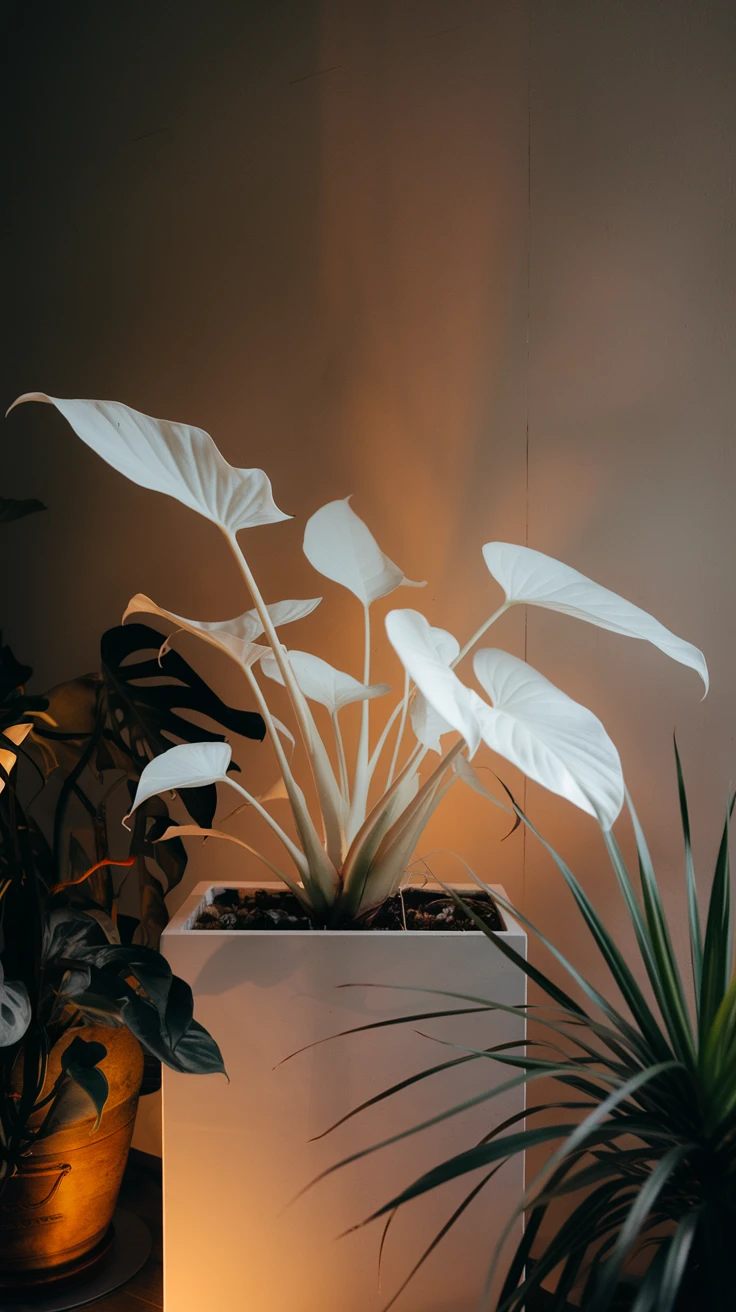
History and Cultural Significance
The Philodendron White Knight holds a captivating history, intertwined with cultural appreciation. This plant is native to the tropical regions of South America. Botanists discovered it among the rich biodiversity of the rainforest. Over time, it gained popularity due to its stunning variegated leaves and unique growth habit.
Significance in Gardening
It has become a treasured addition to indoor gardens and collections. Enthusiasts admire its striking white and green foliage. Moreover, it symbolizes resilience and exotic beauty.
Usage in Decor
The Philodendron White Knight is often used in home decor. Interior designers showcase it for its aesthetic appeal. Placing it near light sources enhances the plant’s vibrant colors while showcasing its majestic form.
Cultural Impact
In many cultures, this plant represents prosperity and growth. It also signifies harmony with nature, making it a popular choice for eco-conscious decorators. Many cultures cherish plants that embody the beauty of tropical landscapes.
- Popularity: Philodendron White Knight continues to trend among houseplant lovers.
- Variations: Horticulturists have cultivated various hybrids, enhancing its appeal.
- Symbolism: Often associated with positive energy and abundance.
- Care Practices: Proper care increases its longevity and vibrance in any setting.
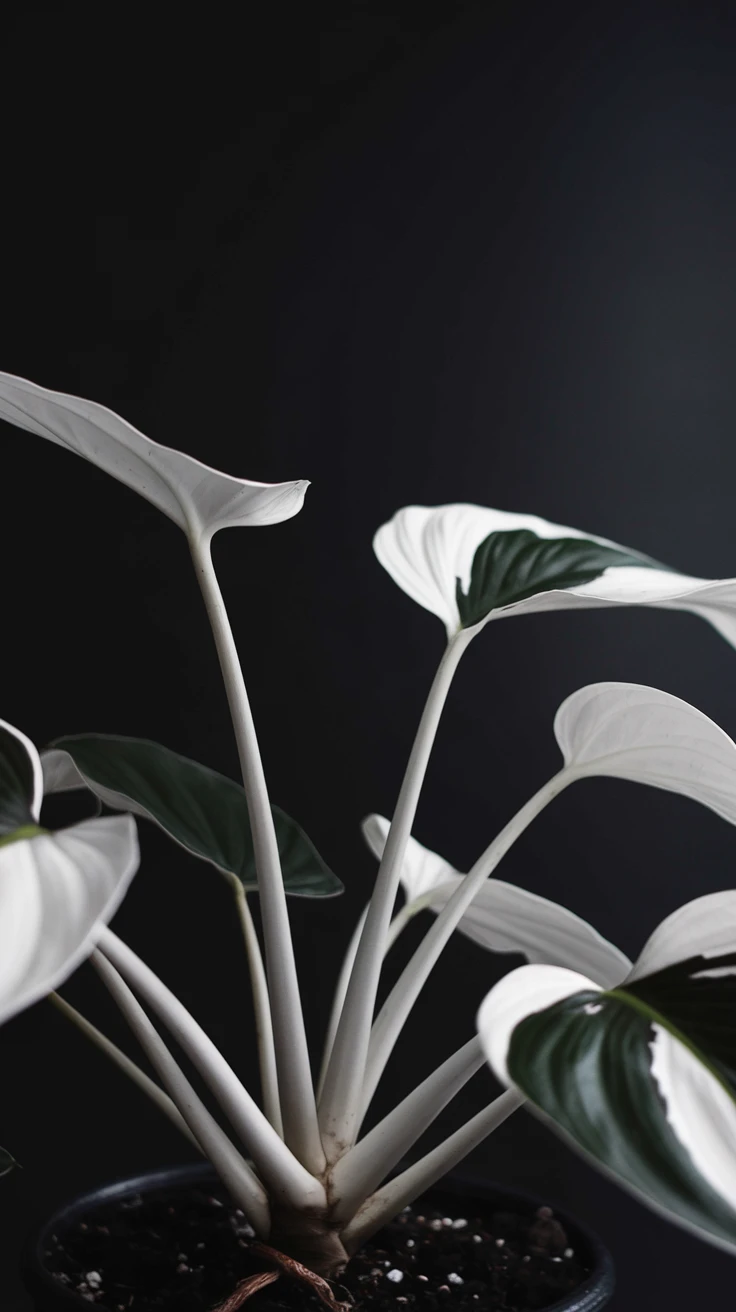
Ideal Growing Conditions for Philodendron White Knight
The Philodendron White Knight thrives in specific growing conditions. Proper care enhances its vibrant foliage and overall health. Understanding its ideal environment helps you cultivate a thriving plant.
Light Requirements
This plant prefers bright, indirect light. While it can tolerate lower light, insufficient illumination affects its growth. Additionally, intense, direct sunlight may burn its leaves. Thus, place it near a window filtered by sheer curtains for optimal results.
Temperature Preferences
Maintain temperatures between 65°F and 80°F (18°C – 27°C). The Philodendron White Knight dislikes cold drafts and sudden temperature changes. Moreover, avoid placing it near heating vents or air conditioning units.
Humidity Levels
Humidity plays a vital role in the health of the Philodendron White Knight. Ideal humidity levels range from 50% to 80%. To boost humidity, consider misting the leaves regularly or placing a humidifier nearby. Grouping plants together also helps in retaining moisture.
Soil & Potting
Use well-draining soil suitable for aroids. A potting mix containing peat, perlite, and orchid bark is ideal. Ensure the pot has drainage holes to prevent root rot. Repot when the roots outgrow their container for best growth.
Watering Guidelines
Overwatering is a common issue with this plant. Allow the top inch of soil to dry out before watering again. Adjust your watering schedule according to the season. In the summer, more frequent watering may be necessary, while winter requires less.
Nutrient Needs
Feed the Philodendron White Knight with a balanced, water-soluble fertilizer every 4-6 weeks during the growing season. This practice encourages healthy growth and vibrant foliage. However, reduce feeding frequency in winter when the plant’s growth slows.
Table of Ideal Conditions
| Condition | Ideal Range |
|---|---|
| Light | Bright, indirect |
| Temperature | 65°F – 80°F (18°C – 27°C) |
| Humidity | 50% – 80% |
| Soil | Well-draining aroid mix |
| Watering | When top 1″ is dry |
| Fertilizing | Every 4-6 weeks (growing season) |
By providing the right environment, your Philodendron White Knight will flourish, showcasing its stunning white variegation and lush leaves.
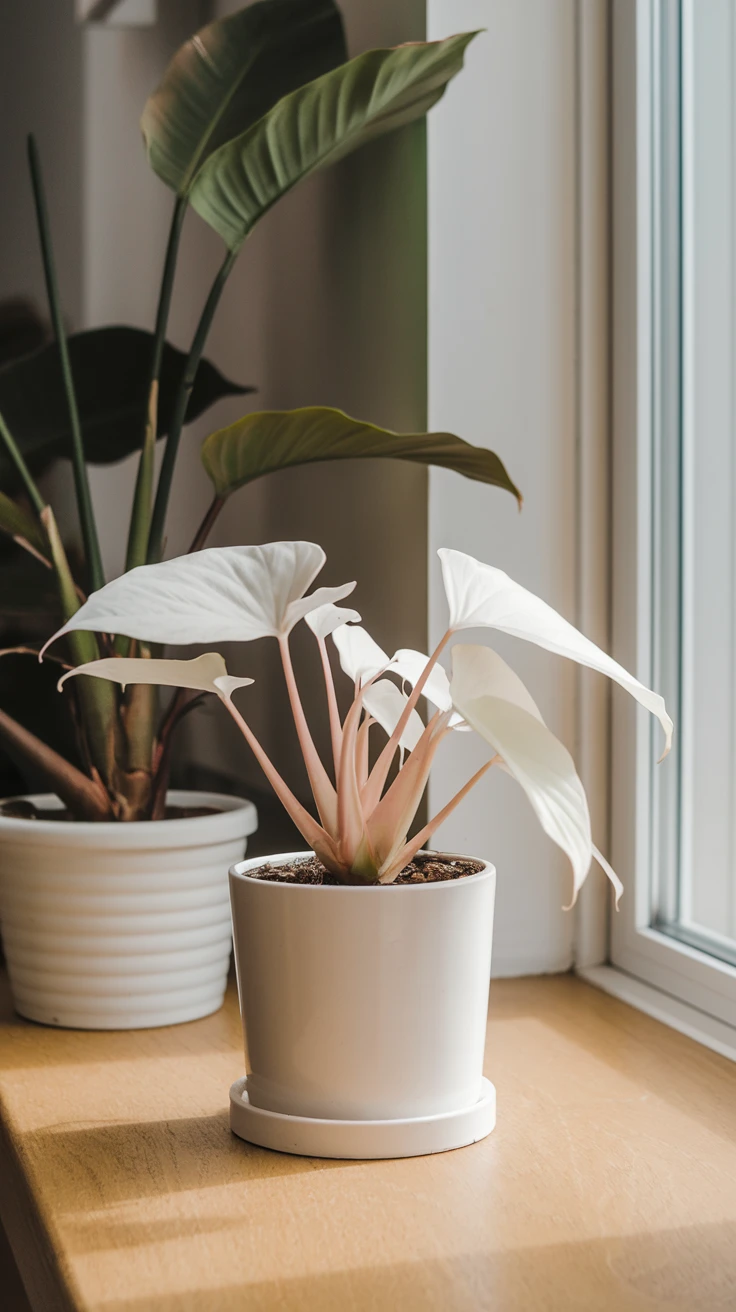
Plant Care and Maintenance
The Philodendron White Knight is an elegant houseplant known for its stunning variegation. Proper care ensures its vibrant appearance and long life. Begin by choosing a slightly larger pot with good drainage. This aids in preventing root rot and encourages vigorous growth.
Lighting Conditions
Philodendron White Knight thrives in bright, indirect light. Avoid direct sunlight, as it can scorch the leaves. Consider placing it near a window with filtered light to promote healthy growth. If the leaves start to fade, the plant might not receive enough light.
Watering Requirements
Water the Philodendron when the top inch of the soil feels dry. Overwatering can lead to root rot, while underwatering may cause the leaves to droop. During the growing season, from spring to summer, increase your watering frequency. Reduce it in the winter when the plant’s growth slows.
Humidity and Temperature
This plant thrives in high humidity levels, ideally between 60-80%. If your home is dry, consider using a humidifier or placing a pebble tray filled with water beneath the pot. The ideal temperature range is 65°F to 85°F. Protect your plant from cold drafts or sudden temperature changes.
Soil and Fertilization
Use a well-draining potting mix that retains some moisture. A mix of potting soil, perlite, and orchid bark works well. For optimal growth, fertilize every 4-6 weeks during the growing season. Opt for a balanced, water-soluble fertilizer to provide essential nutrients.
Maintenance Tips
Regularly wipe the leaves with a damp cloth to remove dust. This practice not only keeps the plant looking tidy but also improves photosynthesis. Prune any yellow or damaged leaves to encourage new growth and a visually appealing plant.
Pest Management
Be on the lookout for pests, such as spider mites and aphids. If you notice any, treat your plant immediately. You can use insecticidal soap or neem oil to eliminate these pests effectively.
- Ensure bright, indirect light.
- Water when the top inch of soil dries.
- Maintain higher humidity levels.
- Use well-draining potting mix.
- Fertilize every 4-6 weeks during growing season.
- Regularly clean leaves to enhance growth.
- Treat pests with insecticidal soap or neem oil.
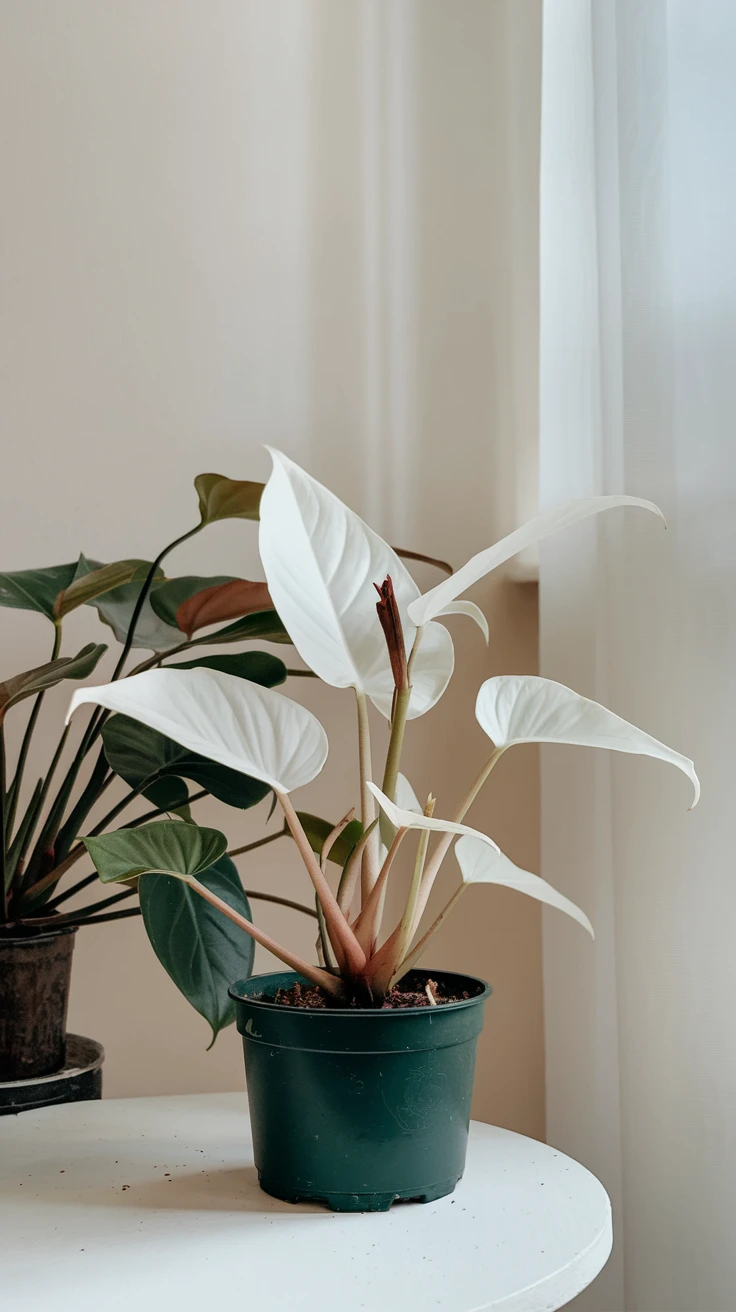
Propagation Techniques of Philodendron White Knight
Propagation of Philodendron White Knight can be an exciting adventure for plant enthusiasts. This tropical beauty thrives when propagated correctly, making it a rewarding process. You can achieve this through various methods, each with its own benefits. For the most successful propagation, consider the following techniques.
Stem Cuttings
The most common method is using stem cuttings. Ensure your cutting includes at least one node, as this is where new growth occurs. To begin, take a cutting about 6-8 inches long. Use a clean, sharp knife to prevent disease transfer.
Next, place the cutting in water or soil. If you choose water, change it regularly to maintain cleanliness. After a few weeks, you will notice roots developing. Once roots are 2-3 inches long, transfer the cutting to soil.
Division Method
Another effective technique is division. This method works best when your Philodendron White Knight has grown significantly. Carefully remove the plant from its pot and inspect the root system. Use a clean knife to divide the plant into sections. Each section should have roots attached and at least one leaf.
After division, plant each section in its own pot. Ensure you water them lightly and place them in a humid environment. This helps them adjust to their new home.
Air Layering
Air layering can also be an excellent choice for propagation, particularly for larger plants. Choose a healthy branch and make a shallow cut around the stem. Pack moist sphagnum moss around this area, securing it with plastic wrap.
After several weeks, roots should start to emerge from the moss. Once a sufficient root system has developed, carefully cut the branch below the rooted area. Plant it in a pot with well-draining soil.
By following these techniques, you can enjoy successfully propagating your Philodendron White Knight. Each method provides a unique way to expand your collection while ensuring the health and beauty of your plants.
Common Problems and Solutions
Philodendron White Knight requires specific conditions to thrive. However, it may encounter several issues. Addressing these problems quickly can help maintain its health.
- Yellowing Leaves: This can indicate overwatering or poor drainage. Ensure the pot has sufficient drainage holes. Additionally, allow the topsoil to dry out before watering again.
- Brown Leaf Tips: This usually points to low humidity or underwatering. Increase humidity around the plant by misting it regularly or using a pebble tray.
- Leggy Growth: Insufficient light can lead to leggy stems. Move your Philodendron White Knight to a brighter location. However, avoid direct sunlight, which can scorch the leaves.
- Pests: Common pests include spider mites and aphids. Inspect your plant frequently. Treat infestations with insecticidal soap or neem oil.
- Root Rot: This often results from overwatering. If your plant shows signs of root rot, remove it from the pot, prune affected roots, and repot in fresh soil.
| Problem | Symptoms | Solution |
|---|---|---|
| Yellowing Leaves | Leaves turn yellow and may drop | Improve drainage and reduce watering frequency |
| Brown Leaf Tips | Tips of leaves turn brown and crispy | Increase humidity and adjust watering |
| Leggy Growth | Stems grow long and sparse | Provide more light, but not direct sunlight |
| Pests | Visible insects on leaves | Use insecticidal soap or neem oil |
| Root Rot | Plant wilts and has a foul smell | Remove rotting roots and replant in dry soil |
By monitoring these aspects of your Philodendron White Knight’s care, you can tackle problems effectively. Regular care ensures fewer issues develop over time. Thus, keep an eye on your plant’s health and make adjustments as needed.
Seasonal Care Adjustments
When caring for your Philodendron White Knight, seasonal adjustments are essential. This plant thrives in varying conditions depending on the season. Start by noting the changes in light and temperature throughout the year. During the spring and summer, the Philodendron White Knight enjoys brighter light. However, direct sunlight can burn the leaves, so filter it with sheer curtains. In fall and winter, reduce the light, as the plant needs less energy during its dormant phase.
Watering Practices
Adjust your watering routine according to the season. In warmer months, the soil dries out more quickly. As a result, water the philodendron when the top inch of soil feels dry. In cooler months, cut back on watering to prevent root rot.
Humidity Levels
This plant loves humidity. In summer, environments can be humid naturally, but in winter, consider using a humidifier. Proper humidity helps keep the leaves healthy and vibrant.
- Spring: Increase light and water.
- Summer: Maintain humidity and check for pests.
- Fall: Reduce watering and light.
- Winter: Keep humidity up and monitor for temperature drops.
Microclimate Setup Tips
Creating the ideal microclimate for your Philodendron White Knight ensures vibrant growth and health. First, place your plant in a location with bright, indirect sunlight. Direct sunlight can scorch the leaves, while too little light may inhibit its growth.
Humidity and Temperature
Philodendron White Knight thrives in high humidity levels. Aim for a humidity of around 60-80%. You can increase humidity by using a humidifier or placing the pot on a tray filled with pebbles and water. Additionally, keep the temperature stable, ideally between 65°F and 80°F (18°C to 27°C). Sudden temperature fluctuations can stress the plant.
Watering and Soil Considerations
Water your Philodendron White Knight when the top inch of soil is dry. Overwatering can lead to root rot, while underwatering can cause leaf drop. Use a well-draining potting mix to facilitate proper drainage. A mix that includes peat, perlite, and bark works best.
Additional Tips for Success
- Monitor the leaves regularly for pests such as spider mites or aphids.
- Fertilize during the growing season with a balanced fertilizer every 4-6 weeks.
- Rotate the pot occasionally to ensure even growth.
- Consider using a stake to support taller growth as the plant develops.
By following these tips, you can create a nurturing environment for your Philodendron White Knight, ensuring its beauty for years to come.
Frequently Asked Questions
The Philodendron White Knight is a popular choice among plant enthusiasts. It features striking variegated leaves that can enhance any indoor space. One common question is about its light requirements. This plant prefers bright, indirect sunlight. Too much direct sunlight can scorch its beautiful leaves.
Another frequent inquiry involves its watering schedule. It’s best to allow the top inch of soil to dry out before watering. Overwatering is a common mistake that can lead to root rot. Additionally, some people wonder about humidity levels. Philodendron White Knight thrives in high humidity but can adapt to average levels.
People also ask about its growth rate. This plant typically grows at a moderate pace, making it suitable for both novice and experienced gardeners. When it comes to fertilization, a balanced fertilizer every month during the growing season is ideal. Finally, many are curious about propagation methods. You can propagate this plant via stem cuttings. Just ensure each cutting has at least one node.
Summary and Recommendations
The Philodendron White Knight is a striking houseplant, admired for its stunning white and green variegation. This plant thrives in bright, indirect sunlight. Ensure it receives adequate light to maintain its vibrant colors. The soil should be well-draining yet retain some moisture. Regular watering allows the roots to absorb nutrients effectively.
Furthermore, humidity plays an essential role in its growth. Aim for humidity levels above 50% to keep the leaves lush and beautiful. While the plant can tolerate average household humidity, increased moisture will promote better growth.
For fertilization, consider using a balanced, diluted fertilizer during the growing season. This will enhance its growth and promote the development of new foliage. Repotting may be necessary once the roots outgrow the current pot. Regularly check for pests, as Philodendron varieties can attract spider mites or mealybugs.
In summary, the Philodendron White Knight is an excellent choice for plant enthusiasts. With proper care, it will thrive and make a stunning addition to your indoor garden.





